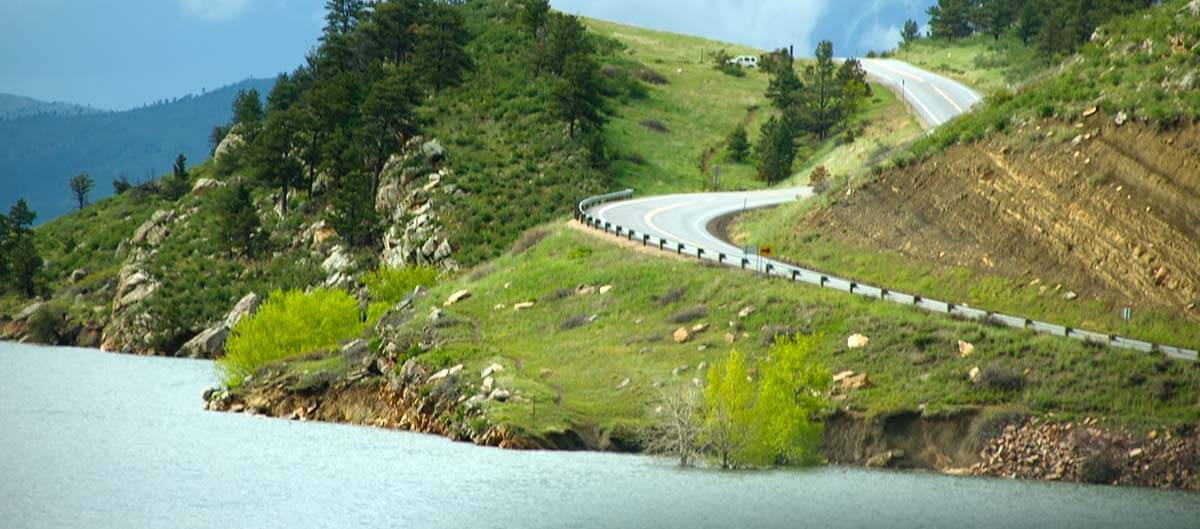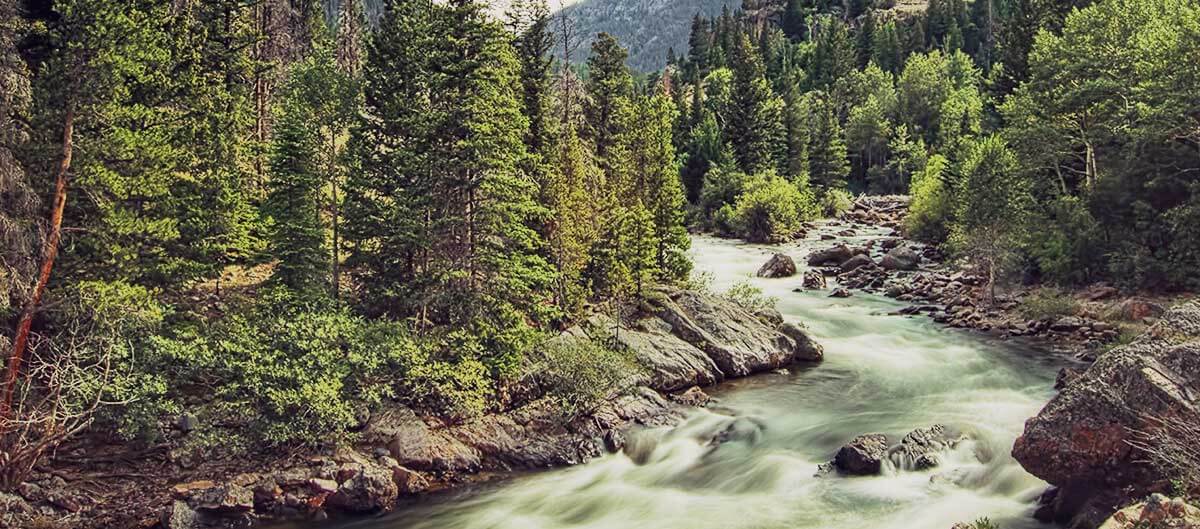
Water Safety Tips for Lake Life and Tubing the Poudre
Colorado may be land-locked, but with lakes like Boyd, reservoirs like Horsetooth, and waterslides like the Poudre River, there’s no shortage of options for water recreation in Northern Colorado. Staying safe is always the best way to have fun on the water this summer.
With the season of the sun finally in full swing, some of us are beating the heat at a local lake, while the more daring among us are taking to the river.
As a family medical practice committed to the health and wellbeing of those in our community, we wouldn’t be doing our jobs if we didn’t share some key water safety advice for your summer fun. So whether you’re soaking up the lake life or tubing the Poudre, have a good time and stay safe with these expert water safety tips.

Stay safe on the lake
As a competitive skier and water safety expert with USA Water Ski, AFM’s own Dr. Angela Walter spends her fair share of time on lakes. We asked her for a handful of top water safety tips when it comes to taking a dip or riding the wake. Here’s what she has to say:
- Never swim alone
“Freak things happen,” Dr. Walter says. “Whether you’re a novice swimmer or a pro in the water, always go with a friend.” - Be mindful of lightning safety
Coloradoans are known to be outdoorsy. And it’s this nature-loving mentality that puts us at a greater risk when lightning strikes. In fact, lightning is the leading cause of weather-related deaths in Colorado. Dr. Walter’s advice? “Watch the sky and listen. If thunder roars, get out of the water and seek shelter in a building or covered vehicle.” - Wear sun protection
Sunbathing is nice. Sunburns… not so much. “I’m a big fan of sunscreen, wide-brim hats, and sunglasses,” Dr. Walter says. “You can look good and protect your skin at the same time.” - Stay hydrated
“Being in the water isn’t enough,” says Dr. Walter. “On the hottest days of summer, we need to fill our bodies with more water than usual to replenish what we lose.” - Watch for hazards
“Freak things happen,” Dr. Walter says. “Before our ski tournaments,” Dr. Walter says, “I always scan the lake for debris or other onsite hazards.” Whether you’re boating, skiing, or boarding, take in your surroundings and take the proper precautions. - Have a first aid kit on hand
Be prepared for the unexpected. “It’s always a good idea to have a first aid kit nearby,” said Dr. Walter. (And when it’s more than a bump or bruise, count on our convenient urgent care locations to get you back on the water.)

Water Safety Tips for Tubing the Poudre
While NoCo might boast a decent number of lakes, we’re admittedly no Michigan. The Cache la Poudre River, Colorado’s only nationally recognized Wild and Scenic river, is an iconic part of our community and history – one that attracts thousands of people every year. While you can hike, bike, fish, and camp along the river, a Fort Collins go-to summer experience is tubing the Poudre.
But before you grab a tube and plop in, it’s important to understand the potential dangers of this popular pastime.
From submerged tree branches and freezing waters to deceptively fast currents and seemingly tame low-head dams, the hazards are real and sometimes deadly. In response to recent tragedies on the river, the Poudre Fire Authority and Poudre Heritage Alliance have teamed with a number of other local agencies to head up the “Play it Safe on the Poudre” initiative. We talked to Robert Overstreet, a Poudre River ranger with the USDA Forest Service, to gather his expert insights on the “Play it Safe” principles. To prep for your own tubing adventure that doesn’t end in disaster, follow these tips from a seasoned river pro:
- Wear a Life Jacket.
“Any time you’re on the river, wear a life jacket,” says Overstreet. “Under state law, life vests aren’t required when inner tubing because a tube isn’t considered a boat. But I would always suggest wearing one.”Ideally, go with a Personal Flotation Device (PFD) that’s river rated. But any life vest is better than none when it comes to tubing the Poudre. - Confirm Temperatures, Timing, and Flows.
The Poudre River is cold. It’s melted snow, after all. Understanding when it’s too cold to tube is critical to avoiding hypothermia. “If the combined temperature of the water and the air is under 100 degrees, you’re at a much greater risk for hypothermia,” Overstreet says.Temperature and weather conditions are just a couple things to consider when planning a tubing adventure. Water flow is another. “Know what you’re getting into,” Overstreet warns. “I would caution against anything above a Class II rapid, an easy rapid with regular waves and clear passages. It’s important to look at the water flows. Wait until when the river gets down to about two feet or under and around 550 CFS.” Flow information for the Poudre in FoCo can be found here, while data for the canyon mouth is here.
As a general rule of thumb, prime tubing time is from mid-July through August, since temps are typically warmer and river flows are calmer. It’s always better to be safe than sorry and check the data before you dive in
- Plan your course.
Use a river access map like this one to plan your course. Be especially careful of hazards like low-head dams, which pose significant dangers.“To the average eye, it looks like this fun little waterfall that you can just cascade over,” Poudre Fire Authority’s Noblett told the Coloradoan. “In reality, what people can’t see is hydraulic function and the way that those were set up, they churn water in such a way that they become … a washing machine of sorts.
“For extra precautions against unexpected hazards, walk the area you’re planning to tube beforehand to spot any visible threats to a fun, safe float.
- Don’t Drink and Tube.
The river is unpredictable, and you need to be alert. Don’t dull your senses. Enjoy that craft brew once your tubing trip is done - Use Your Words.
Always let someone back at home know when and where you’re going. And be sure to notify them of any last-minute changes to the plan. - If You Go Overboard…
If you do end up in the river rather than on your tube, follow a few simple steps.- Turn onto your back and point your feet downstream.
- Never stand up or attempt to walk out.
- Make your way as close to shore as you can.
- Crawl or scoot your way out to keep from getting caught on rocks or other obstacles.
- Don’t Be a Hero.
Bottom line: Don’t jump in to save someone in rushing waters or rapids. Instead, throw them a rope so they can be pulled to safety. - Call 911.
Since the unexpected can happen, it’s always a good idea for someone in your party to carry a phone – one that’s either waterproof or in a water-safe bag. In any emergency, call 911 right away. Make sure to share all the necessary details about what’s going on and where you are. - No Strings Attached.
“Never tie anything to yourself or your tube,” Overstreet urges. “You don’t want anything that could potentially trap you in the water.” Bring a rope in case of emergency, but keep it stashed until there’s an urgent need for it.
Summing things up
Water activities are always a thrill, so before cooling off in the refreshing waters that flow through our community, remind yourself of this life-saving info and pass it on!
